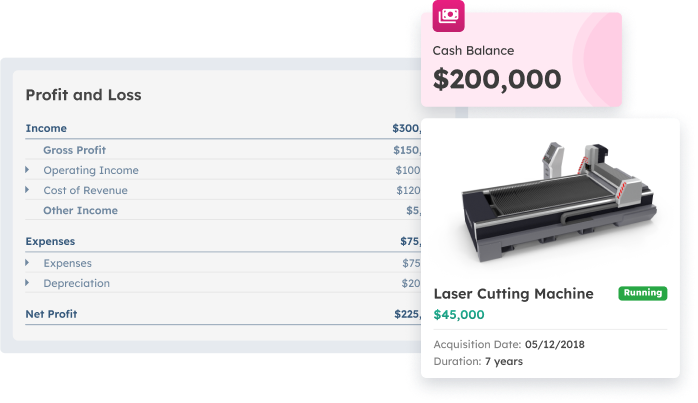Singapore’s business environment is noted for its rapid growth and strong economic conditions. The country’s effective regulatory system and geographical location position it as a global corporate hub. To secure long-term success in such a competitive market, organizations must first comprehend the complexities of spending management.
Understanding business expenses is crucial for both employees and companies in Singapore. Proper expense management ensures financial stability and compliance with tax regulations. With Singapore’s corporate tax rate at 17%, businesses can also take advantage of various tax incentives available to reduce their overall tax burden.
- Business expenses are essential costs incurred to operate a company, including salaries, rent, utilities, and materials. These expenses are necessary for businesses to stay on track and achieve their objectives.
- Expenses are split into employee-related costs (wages, benefits) and company-related costs (rent, utilities, marketing).
- Manage expenses effectively with accounting software, regular reviews, tax compliance, technology, and monitoring entertainment costs.
- ScaleOcean’s accounting software automates expense tracking, invoicing, and reporting, improving efficiency and financial transparency.

1. What Are Business Expenses?
Business expenses are critical to any company’s daily operations. Simply expressed, these are the expenses incurred by a firm in order to continue operating its business. From paying salaries to covering utility bills, these expenses help firms stay on track and fulfill their objectives.
It’s critical to recognize that corporate expenses are not the same as personal spending. There is also a clear distinction between employee-related costs and those directly related to corporate operations. Employee costs are focused on people, whereas company expenses are concerned with operations.
2. Categories of Business Expenses

Understanding the many sorts of business expenses is essential for successfully managing your company’s finances. Each expense serves a specific purpose in keeping the firm functioning successfully, such as supporting your team or maintaining everyday operations. To make things simpler, corporate expenses are often divided into two major categories:
a. Employee-Related Expenses
Employee-related expenses make up a significant portion of corporate costs. This comprises monthly salary and wages, which are the foundation of employee motivation and productivity. Additionally, firms must cover employee perks such as CPF contributions, insurance, and health care as part of their responsibilities.
Companies in Singapore frequently invest in training and development programs, which help employees enhance their abilities and contribute more effectively to the firm. Furthermore, business travel and accommodation charges are typical. Whether for international conferences or client meetings, these are regarded as employee business expenses and obligations.
b. Company-Related Expenses
Aside from employee-related costs, business expenses include the company’s operating requirements. These include rent for office space, utilities, and office supplies required for everyday operations. Capital expenditures include larger investments such as machinery purchases and office improvements. According to ACRA, company-related fees also include a $300 registration fee for transactions such as incorporation, annual filing, and change of particulars.
These costs include marketing operations such as digital commercials, social media promotions, and public relations efforts. For organizations that prioritize innovation, research and development can account for a large amount of their budget. These categories are critical for efficiently managing expenditure management operations.
3. Tax Deductibility of Business Expenses in Singapore
In Singapore, businesses must understand how their expenses are taxed. To be deductible, expenses must be incurred solely for the purpose of generating income. This criterion adheres to Singapore accounting standards, ensuring fairness and accuracy in reporting. Understanding these standards allows organizations to manage costs more effectively while remaining compliant.
Accounting fees, administrative expenditures, advertising, bad debts, and bank charges are examples of common permitted business expenses recognized by the IRAS. Other deductible expenses include bookkeeping services, borrowing fees, and commissions that directly contribute to income generating. Meanwhile, non-deductible expenses include personal expenses, capital expenditures, and some mandatory payments. Staying current helps to avoid errors in financial reporting.
4. Impact of Business Expenses on Financial Statements
Properly managing business spending ensures that your profit and loss statement accurately reflects the company’s financial health. These expenses are deducted from revenue to calculate profitability. If not carefully tracked, your financial accounts may present an inaccurate image of firm success.
Understanding the relationship between expenses, revenue, and profitability enables businesses to make better financial decisions. Accurate tracking also has an impact on your cash flow statement, which shows how much money enters and exits the organization. This is critical for maintaining a positive cash flow and long-term viability.
Also Read: A Comprehensive Guide to Financial Management
5. Best Practices for Managing Business Expenses
Managing business spending entails more than just keeping track of numbers; it also entails creating a structure that promotes long-term financial health. Good practices help businesses avoid excessive expenses and keep their finances under control. This technique also promotes regulatory compliance and financial transparency. The following are some of the most effective techniques to manage expenses:
a. Use Reliable Accounting Software
A robust accounting system is the foundation for managing business spending. Using accounting software Singapore makes it easier to track and categorize each transaction. This contributes to accurate reports for decision-making. Reliable tools minimize human mistakes and increase efficiency.
b. Review and Categorize Expenses Regularly
Reviewing spending on a regular basis helps discover areas where the organization may overpay. Proper categorization allows for more accurate analysis of financial reports. Using a cost benefit analysis template can help identify areas where spending does not align with the expected benefits, enabling more effective budgeting and future planning. Clear records are also important for tax purposes.
c. Ensure Compliance with Tax Regulations
Following the guidelines for business deductions helps to avoid legal risks and penalties. Compliance guarantees that you take full advantage of potential tax relief options. It also maintains your financial records clear and transparent. Staying up to date decreases the likelihood of reporting errors.
d. Leverage Technology for Tracking and Reporting
Technology simplifies spending management by providing tools for real-time monitoring. Automated reports help firms remain efficient and organized. Digital solutions reduce the danger of costs that are neglected. They also provide clearer insights into financial planning.
e. Monitor Business Entertainment Expenses Wisely
Monitoring workplace entertainment expenses helps maintain spending within appropriate levels. Proper documentation aids in the compliance with business policies. Clear guidelines keep these costs from impacting profitability. Tracking promotes responsibility across departments.
6. Leveraging Technology for Efficient Expense Management
In today’s fast-paced business climate, using technology to handle expenses efficiently is more crucial than ever. Modern software solutions can help firms streamline their financial processes by providing real-time data and decreasing manual errors. These technologies not only save time, but also improve accuracy when tracking and reporting spending. Let’s look at how technology can improve the way firms handle their expenses:
a. Software Solutions for Expense Management
Software built for expense management provides a consolidated platform for managing all business spending. These systems automate processes, minimize human error, and generate detailed reports. They assist firms in being organized and compliance with tax requirements, as well as in making better financial decisions.
b. Benefits of Expense Automation
Automating expense management saves time by removing human data entry and processing. It offers real-time tracking, allowing firms to make informed financial decisions. According to Gov Insider, the majority of users reported that it took at most three days to successfully complete a trip-based expense report. Automation also improves accuracy, reduces the likelihood of errors, and simplifies financial documentation, making it easier to analyze expenditure patterns.
c. ScaleOcean’s Accounting Software for Streamlined Expense Management

ScaleOcean Accounting Software simplifies financial management by combining critical activities such as spending monitoring, invoicing, and reporting on a single platform. Automation improves efficiency, accuracy, and transparency. Businesses benefit from increased spending control, fewer errors, and greater financial insight, which leads to better decision-making and cash flow management.
ScaleOcean provides a free demo for enterprises interested in exploring the full possibilities of its product. Additionally, ScaleOcean offers the CTC grant to assist firms in their digital transformation path, guaranteeing that they can leverage the value of this ERP solution. ScaleOcean program has several essential characteristics, which are listed below:
- Integrated Financial Functions, Combines expense tracking, invoicing, and reporting in one platform for seamless operations.
- Automation for Efficiency, Streamlines accounting processes with automation, reducing errors and boosting efficiency.
- Real-Time Financial Visibility, Provides real-time access to financial data for faster, data-driven decisions.
- Accurate Expense Management, Ensures precise expense tracking and better control over financial operations.
- Error Reduction and Accuracy, Minimizes errors, ensuring accurate financial reporting and smoother operations.
7. Conclusion
Effective control of corporate expenses is critical for financial stability and long-term success. Understanding how to analyze and control expenses enables firms to uncover cost-cutting opportunities while increasing profitability. Companies that optimize their spending can better allocate resources and focus on strategic objectives.
Using best practices and innovative technologies, such as ScaleOcean, can help expedite expense management operations. This not only improves accuracy and efficiency, but also allows firms to make more informed financial decisions. Finally, proper spending management is critical for long-term performance and competitiveness in the marketplace.
FAQ:
1. What are expenses in business?
Business expenses refer to the costs a company incurs to operate and generate income. These expenses encompass a broad range of items, including employee wages, rent for office space, utility bills, raw materials, and marketing expenditures that are necessary to run daily business activities.
2. What can be declared as a business expense?
Business expenses that can be declared include any cost that directly supports business activities, such as employee salaries, office supplies, travel costs, utility bills, rent, marketing campaigns, and professional services. These are typically deductible from taxable income to reduce the overall tax burden.
3. What is a general business expense?
A general business expense is any expenditure essential for the regular functioning of a business. This category includes standard costs like rent, utility payments, office supplies, and wages, all of which are necessary for keeping the business running smoothly on a day-to-day basis.
4. How to Calculate Business Expenses
1. Include Salaries and Wages, Account for employee compensation, including salaries, bonuses, and benefits.
2. Add Utilities, Include utility costs such as electricity, water, and internet for operations.
3. Include Rent, Factor in rent for office space or facilities used by the business.
4. Consider Marketing Expenses, Account for advertising, marketing campaigns, and promotions.
5. Track Office Supplies, Include costs for office supplies like paper, pens, and computers.
6. Use Accounting Software, Use software to track and categorize expenses accurately.
7. Manually Record Expenses, Alternatively, keep manual records of all transactions for transparency.
8. Total Up All Expenses, Add all costs to calculate total business expenses for profitability and tax reporting.







 PTE LTD..png)
.png)

.png)








.png)
.png)
















